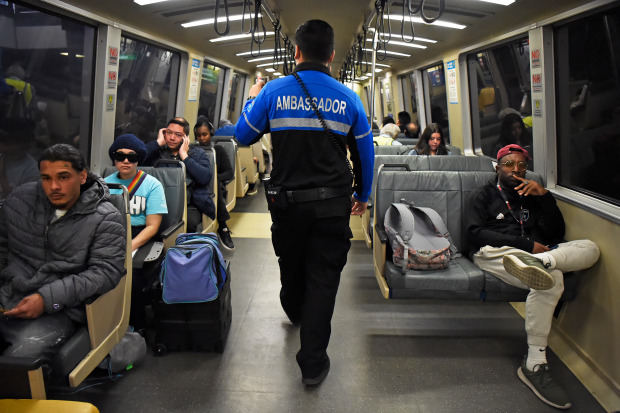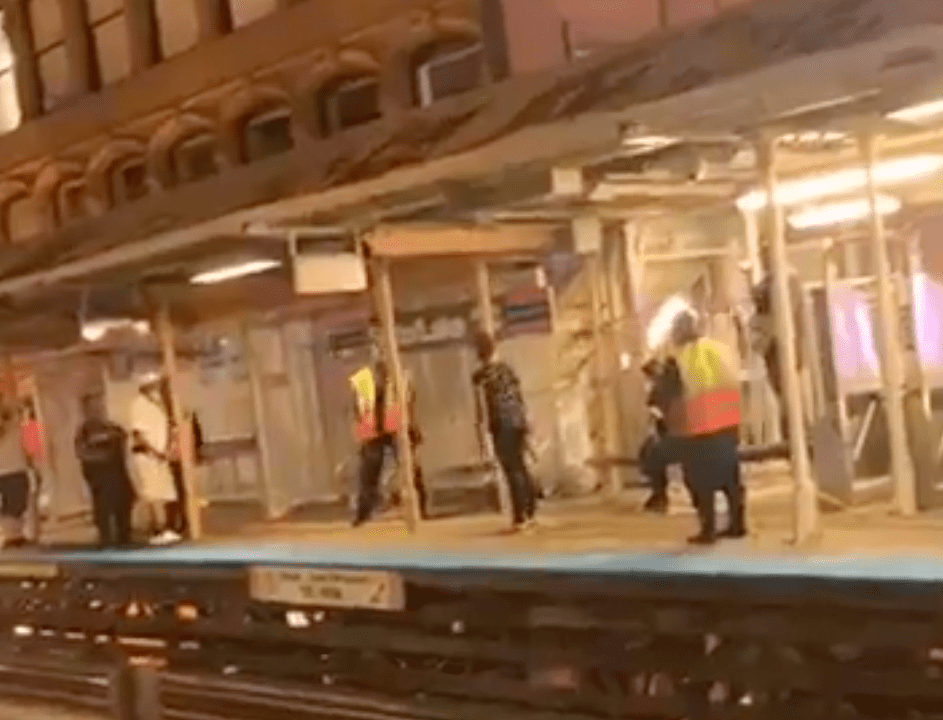Note: This article contains descriptions of violence.
It goes without saying that public safety is a top priority for all Chicagoans these days. Street crime generally isn't Streetsblog's beat. However, when it impacts people's freedom of mobility and transportation choices, that is relevant to our mission.
Lately while compiling the Today's Headlines link stack, I've noticed a disturbing trend. Stabbings on the CTA have been commonplace during the last several weeks. Here are the six cases I've read about recently.
On Thursday, June 24, at about 11:45 p.m., a person stabbed a man, 56, in the back of the head on a Blue Line train near the Armitage/Western station and left the scene, police said. The victim suffered a minor laceration and declined medical treatment.
On Friday, July 2, around 4:30 p.m. on Friday, Van Crocker, 55, boarded a bus on Cottage Grove Avenue, prosecutors said. Near 86th Street, as Crocker stood in front of another man, 66, Crocker pulled out a knife and stabbed him in the chest, killing him. Crocker later confessed that he wanted to kill the man, whom he did not know, prosecutors said. He was charged with first degree murder and denied bail at a hearing on Sunday.
On Tuesday, July 20, at about 5:30 a.m., two men approached a 36-year-old woman at the Blue Line's Cicero Avenue station and punched her in the face, according to police. The woman drew a knife and cut one of the attackers. One of the assailants disarmed her, and then stabbed her in the face multiple times. The attackers fled on foot, and the woman was hospitalized in critical condition.
The next day, on Wednesday, July 21, at around 9:15 p.m., a 68-year-old man got in an altercation with a female passenger on the Damen bus on the 2500 block of North Damen Avenue in Logan Square, police said. The woman stabbed the man multiple times in the face, torso, and arm and left the scene. The victim was hospitalized in good condition.
On Wednesday, July 28, around 10:45 p.m., a male CTA worker, 49, was power-washing the State and Lake Loop 'L' station platform when he accidentally sprayed water on female customer Quinton Joiner, 37, according to police. Joiner confronted the employee, and during the ensuing altercation she stabbed him in the side of the neck, and he was hospitalized in fair condition. She was arrested and charged with misdemeanor battery.
And this morning, at around 12:20 a.m., a man, 27, tried to pass by a pair of men who were arguing on the Belmont Red Line platform, police said. One of the people in the altercation drew a knife and stabbed his hand. The victim was hospitalized and his condition was stabilized. Maurice Holmes, 49, was arrested nearby and charged with misdemeanor battery causing bodily harm.
Clearly, more needs to be done to keep riders safe on the CTA. But what's the right strategy?
In the wake of violent incidents earlier this summer, including a July 10 incident in West Pullman where a man who was angry because he was turned away from a bus for refusing to wear a mask fired at the doors, the Amalgamated Transit Union Local 241, which represents CTA workers, has advocated for posting armed guards on certain buses and trains, in addition to existing Chicago Police patrols.
However, adding more guns to transit systems won't make us safer. That's evidenced by recent incidents where police involvement in the enforcement of minor infractions ended in tragedy.
On February 28, 2020, police tried to detain Ariel Roman, 33, after they saw him illegally walking between train cars. An officer wound up shooting up a station escalator at him as he fled, endangering other CTA riders and inflicting life-change injuries on Roman.
And on March 4 of this year, after Alfredo Alanis, 33, refused to pay his fare on a South Shore Line commuter train and became belligerent, onboard staff called for police backup, authorities said. After Alanis put the responding officer in a headlock, compressing his neck, the officer shot Alanis in the abdomen.

As I've previously written, a better solution than increasing armed enforcement on transit would be for the CTA to follow the example of the San Francisco area’s BART system, which deployed 30 unarmed “transit ambassadors” trained in de-escalation and anti-bias techniques to address safety concerns. While ambassadors conducted over 12,000 “educational interactions” with riders, according to BART, out of those incidents, the ambassadors only called police on 132 occasions.
We also need to prioritize providing access to mental health services to all residents as a strategy to promote safe and peaceful public spaces. In the fatal July 2 bus stabbing case, Van Crocker's public defender said Crocker suffers from mental illness, which limited his decision-making capacity during the incident. The facts of some the other cases outlined above suggest that mental health issues may have been a factor in these acts of violence.
In June, a coalition of activists and progressive aldermen released a proposal calling for earmarking $100 million for reopening 10 mental health clinics, using some of the $1.8 billion allocated to Chicago in federal COVID stimulus funds. Doing so would go a long way towards ensuring that residents with mental illness can access the counseling and medication they need, which would be in everyone's interest, including CTA riders.
Ultimately, we're never going to have a peaceful Chicago until all citizens' basic needs are met, addressing the underlying causes of violence. That means more funding for all kinds of healthcare, as well as housing, education, job training, addiction counseling, and other social services. But further investment in the prevention of violence, as opposed to armed responses to it, would be money well-spent.




